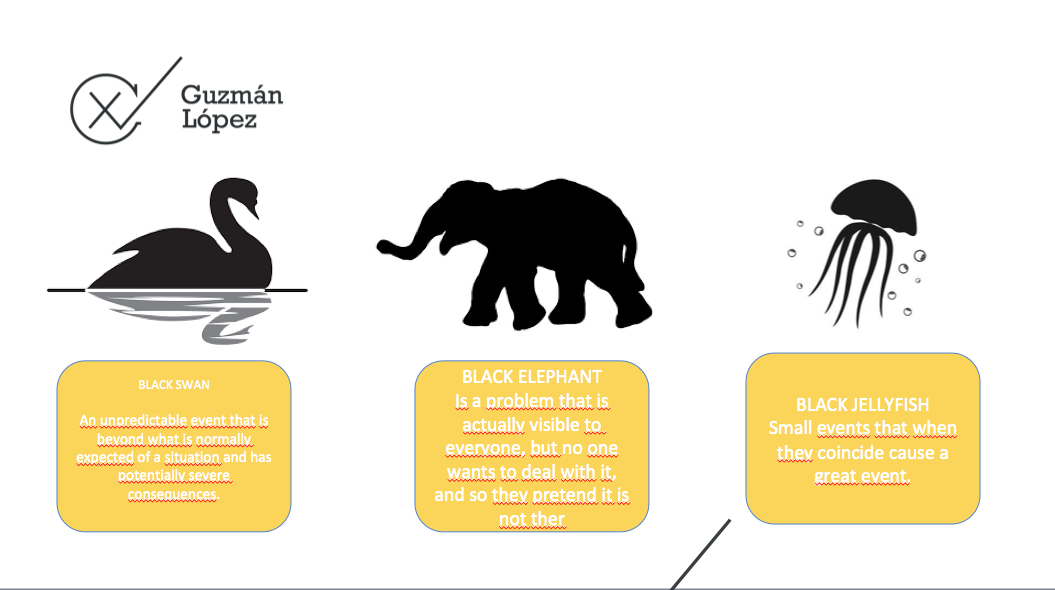Mental aikido: how to take advantage of changes to boost your creativity
Esperanza Cuenca is an industrial engineer, and for many years she has focused on designing and executing changes in systems and on people to make things happen (change management). I have invited her to chat with me because I think that the inspiration for creativity arises mainly from unexpected events; So being able to share ideas with a senior leader at a large financial institution like her is a great opportunity to dig deeper .
Curious facts
- Her father is a painter and professor of Fine Arts, but what attracts her are processes and quantum technologies. However, she has always looked at his father’s creative processes and has integrated them into her way of thinking.
- She defines herself as someone with a great capacity for learning, she even sees herself as a nerd. I can attest to this, since together with Pako , they are part of the club of excellent students that I have been fortunate to have.
- She is passionate about aviation and aeronautics in all its aspects. She is a member of the Royal Aeronautical Society, the Spanish Aeronautical Society and Ellas Vuelan Alto. He also belongs to IVAO (International Virtual Aviation Organization) and Anyway Virtual Airlines (a leading virtual airline in Spain), and enjoys flying a Beechcraft B58 in his small simulator at home.
- Her studies at Harvard and MIT made her a big fan of the methodology that is used at universities in the United States , where the hybrid profiles are more than usual, and she would like that in Spain these profiles were not so scarce .
It’s not intelligence, it’s other skills!
Esperanza is not going to say it, but I tell you in confidence: she is a very, very intelligent girl. When I met her in one of my training sessions on creative thinking , I could see it first-hand, so I take the opportunity to see what she thinks about the relationship between intelligence and creativity:
“I don’t think intelligence is the key to thinking creatively. In my case, the driver for creativity is curiosity, since it is what makes me wonder about everything that surrounds me. I ask myself things like why does the economy behave the way it does? Or why should we do this change and where will it lead us? Let’s say the question why? it’s my favorite.»
As a student of creative thinking, I have always been clear that a certain intelligence is a necessary condition for creativity, but not sufficient. If you are a follower of these conversations, you already know that aspects such as courage, persistence and, of course, curiosity, correlate more than intelligence itself.
“IQ correlates much less with creativity than bravery. The creativity process is a risky process. «
This reminds me of what Peter Drucker said, and that is that «where innovations have been made, a brave decision was made.» And the analogy that Robert Stenberg made between investment funds and creativity also comes to mind: the more risky your idea has, the more gains it can yield, but it can also be more likely to fail. However, if our ideas are conventional we will not fail but we will not succeed either. »
“In general, in Spain it is difficult to understand the importance of the perhaps misnamed soft skills. We know that it is extremely difficult to automate soft skills, and we are not able to do it with our current technologies. Curiously, soft skills are the hardest skills»
As my good friend José Antonio would say, the lack of soft skills cause hard problems. Too bad the pandemic has wiped them off the map in many organizations.
How to deal with changes
It seems to me that it was the Greek philosopher Heraclitus who said «no one bathes twice in the same river, because everything changes in the river in which one bathes.» And it is impossible for things to stay still, since everything changes all the time.
“The universe is totally random and our capacity to predict its behavior is very limited. Generally, we have a very conflicted relationship with change. On one hand, we run away from change because in a way it poses risks. On the other hand, the neuroplasticity of our brains leads us to seek changes. In summary, it is a “we love to hate” situation. Nobody likes to get out of the comfort zone because, well, it is very comfortable in there, and even without being completely comfortable, it is still my own discomfort, the discomfort that I have chosen. «
It is very curious that we have this relationship with change because, if we think about it, many people would like to change many things in their lives. But it seems that there is something we are missing …
«Changes, even if they are for good, are always complicated and cumbersome to manage.»
I remember that when I was studying social psychology at University, we learnt about the studies on the effects of winning large sums of money in the lottery, and I already warn you that everything that glitters is not gold. Most people who win the lottery lose everything earned in less than five years and face jealousy, envy, depression or anxiety. Seeing this, it almost better not to win the lottery.
I talk to Esperanza about the methods and tools she uses with her team to deal with all these changes that are so upsetting to people.
«The methodologies are always a guide, but not should be an end in itself. At the end we just focus on the tools to have some psychological safety, since you get to a certain depth if you have this safety. But the most important thing is the emotional side, and it is hardly ever taken into account. There is hardly any emotional accompaniment in the process of change. »
Swans, elephants and black jellyfish
Since 2008 I have been researching everything related to unexpected events to turn them into an opportunity for innovation – and my first book Serendipity came out of this research – and, to this day, I have not ceased to be fascinated by the ways in which we manage these changes. A key insight from this research are the three formats that symbolize different types of unexpected events. I ask Esperanza about each one of them.
«The black swans can be handled. Organizations enter into crisis management mode and this make their creativity to increase. In the end everything is sorted, managed and achieved, because, either you do it, or the competition does it. «
«The black elephants (of which Nokia and Kodak are two well-known cases) are more worrisome because they have a component of denial. The worst thing is that these events could have been managed before it was too late, and they were not managed because there was a refusal to accept these events. A conscious decision was made to do nothing. What eventually will kill an organization will not be a black swan but a black elephant. The elephant is not talked about and the swan is. We are afraid of what we can handle.»
«The black jellyfishes, are examples of a “we love to hate” situation. They are annoying and uncomfortable, but in the end we love them because they are our jellyfishes. The problem comes when your day is filled with jellyfish. People say «I’m a firefighter, putting out fires all day long.» And that in the long term is not good. It has a component of addiction probably because of the adrenaline that is involved. Also certain organizations and systems in a certain way reinforce these behaviors. Therefore, it is not surprising that there are people who create their own fires in order to put them out. »
The enemy of serendipity
When I coach a team to turn a black jellyfish into a great idea, I realize that the enemy is neither lack of understanding nor the ability to achieve it, as people often learn it without problems. So why is serendipity not sought more?
“When we face a change, we focus more on what we lose than on what we win, and we don’t want to assume it. We prefer not to lose than to win. «
For years I have observed that changes always entail a loss, and as such, they need to go through a process similar to mourning.
“The uncomfortable truth is that the process of change is a process of mourning, it is like a breakup, with the same sensations.»
As I have mentioned here sometime, I am in love with Stoic philosophy, which is why I find it curious that Esperanza connects the fears about what we lose with something very stoic, the illusion of control.
«Beyond fear there is freedom. I must be aware of what depends on me and what does not. Most things don’t depend on me and I cannot control them. The Universe is totally random as evidenced by quantum mechanics, and our ability to predict their behavior is extremely limited»
Books to think
What books have influenced your way of thinking?
- Predictably Irrational: The Hidden Forces That Shape Our Decisions. Dan Ariely.
- The Tyranny of Merit. Michael Sandel.
- The Brain that Changes Itself. Norman Doidge.
- Malcolm Gladwell


